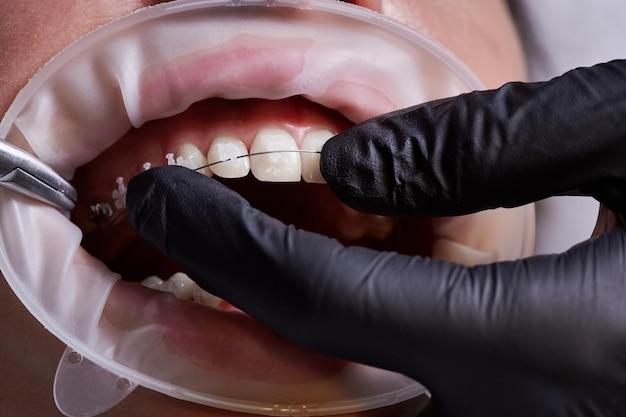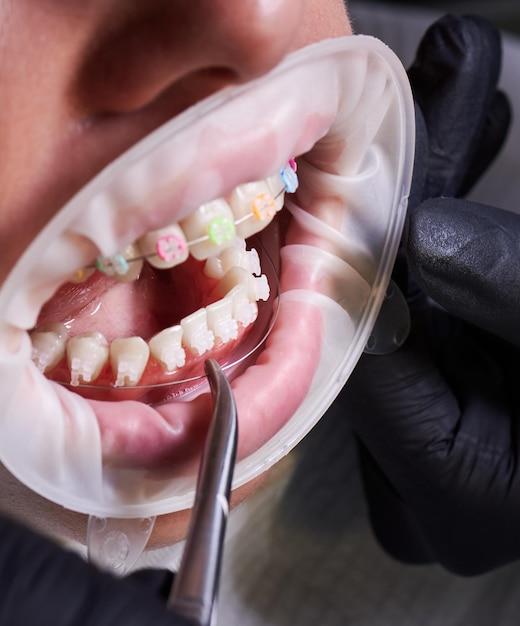Welcome to our comprehensive guide on how to clean sticky UV resin! If you’ve ever worked with UV resin, you know that it can sometimes leave behind a sticky residue that can be frustrating to deal with. Whether you’re a seasoned resin artist or just getting started with this versatile material, understanding why it becomes sticky and how to clean it properly is essential for achieving smooth, professional-looking results.
In this blog post, we’ll address common questions like why UV-cured resin can be sticky, the factors that contribute to sticky resin, and whether tacky epoxy resin ever fully cures. We’ll also dive into the potential causes of bubbles in UV resin and discuss if it can cure on cloudy days. Additionally, we’ll explore methods for cleaning UV resin after curing, compare its toxicity to epoxy resin, and offer solutions for fixing sticky resin. Lastly, we’ll touch upon various topics like the curing abilities of LED lights, alternative ways to harden resin without a UV light, and a handy tip regarding isopropyl alcohol for cleaning resin prints.
So, let’s jump right in and discover the solutions to cleaning sticky UV resin for your resin crafting projects in 2023!
How to Effectively Clean Sticky UV Resin
Resin crafts and projects can be incredibly satisfying, but dealing with sticky UV resin can be a sticky situation. Don’t worry, though – we’ve got you covered with some tried and tested methods to effectively clean that stubborn residue. Let’s dive in and discover the secrets of dealing with sticky UV resin!
1. Gentle Soap and Warm Water Combo
When sticky UV resin strikes, reach for the basics: gentle soap and warm water. Start by rinsing off any excess resin with warm water, and then apply a small amount of soap to the affected area. Gently rub the resin residue with your fingers, creating a lather. Rinse off the soap, and voila! You’ll be amazed at how easily the sticky mess disappears.
2. Isopropyl Alcohol: Your Resin Superhero
Isopropyl alcohol, known to some as rubbing alcohol, is a resin superhero when it comes to tackling stickiness. Grab a clean cloth or a cotton ball, soak it in isopropyl alcohol, and gently dab or rub it onto the sticky surface. The alcohol helps break down the resin, making it easier to remove. Just remember to wear gloves and work in a well-ventilated area.
3. Acetone: A Resin’s Nemesis
If the sticky UV resin is particularly stubborn, acetone might be your secret weapon. However, be cautious when using acetone, as it is a powerful chemical that can dissolve some surfaces. Apply a small amount of acetone to a clean cloth and gently dab it onto the sticky resin. Remember, a little goes a long way, so use it sparingly and in a well-ventilated area.
4. Sticky Situation Prevention
Prevention is always better than cure, especially when it comes to sticky UV resin. To minimize the chances of sticky mishaps, try these preventive measures:
- Avoid touching the resin surface unnecessarily during the curing process.
- Use a UV light with the appropriate wattage and curing time recommendations.
- Be mindful of temperature and humidity, as they can affect resin stickiness.
- Keep your workspace clean and free of dust or debris, which can mix with resin and cause adhesion issues.
5. A Sticky Reminder: Patience is Key
While dealing with sticky UV resin, it’s essential to remember that patience is key. Rushing the cleaning process may result in a messier situation. Take your time, follow the steps mentioned, and let the cleaning agents effectively work on the resin. Soon enough, your sticky nightmare will become a distant memory!
Tackle the Stickiness with Ease!
With the information provided, you’re armed and ready to tackle any sticky UV resin situation that comes your way. Remember to employ the right cleaning methods, exercise caution with stronger chemicals, and prioritize preventive measures to keep sticky situations at bay. So go on, embrace your resin crafting endeavors, confident in your newfound knowledge of sticky resin cleaning!
FAQ: How Do You Clean Sticky UV Resin
Welcome to our comprehensive FAQ guide on how to clean sticky UV resin. Whether you’re a seasoned resin artist or just starting out, dealing with sticky resin can be frustrating. But fear not! We’re here to answer all your burning questions and provide you with the solutions you need to get that resin looking crystal clear. So, let’s dive right in!
How do you clean sticky resin
Cleaning sticky UV resin is a breeze if you follow these simple steps:
- Start by wiping off any excess resin with a cloth or paper towel.
- Prepare a solution of warm soapy water using a mild detergent.
- Gently scrub the sticky resin with a soft-bristle brush or sponge.
- Rinse the resin thoroughly with clean water.
- Pat dry with a soft, lint-free cloth.
- If there are still sticky spots left, repeat the process or try using isopropyl alcohol.
Why is my UV cured resin sticky
Several factors can cause UV cured resin to remain sticky:
- Insufficient curing time: If the resin hasn’t been exposed to enough UV light, it may not cure completely.
- Incorrect resin-to-hardener ratio: Using the wrong ratio can result in incomplete curing.
- Inadequate UV light intensity: Make sure you’re using a UV light source with sufficient power to properly cure the resin.
- Unclean working surface: Contaminants on your workspace can interfere with the curing process and cause stickiness.
Does tacky epoxy ever cure
Good news! Tacky epoxy can be cured by following these steps:
- Scrape off the tacky surface with a plastic scraper or putty knife.
- Clean the surface with warm soapy water and rinse thoroughly.
- Dry the area completely.
- Apply another coat of epoxy, making sure to follow the instructions for proper mixing and curing.
Why does my UV resin have so many bubbles
Bubbles are a common issue when working with UV resin. Here are a few reasons why they may appear:
- Inadequate mixing: Make sure to thoroughly mix the resin and hardener to eliminate any air bubbles.
- Using a blowtorch: While it may help remove bubbles, excessive heat from a blowtorch can introduce new bubbles.
- Working in a dusty environment: Dust particles can get trapped in the resin and create bubbles.
- Insufficient curing time: If the resin doesn’t have enough time to cure, bubbles may form.
Will UV resin cure on a cloudy day
UV resin relies on ultraviolet light to cure, so a cloudy day can indeed affect the curing process. The resin may take longer to cure or may not cure at all. It’s best to work in a well-lit area or use a UV lamp to ensure proper curing.
How do you clean UV resin after curing
Once UV resin has cured, cleaning can be a bit trickier, but don’t worry, we’ve got you covered. Follow these steps:
- Scrape off any excess resin with a plastic scraper or putty knife.
- Soak the resin in warm soapy water for a few minutes.
- Use a soft brush or sponge to gently scrub away any remaining residue.
- Rinse thoroughly with clean water.
- Dry the resin with a soft cloth.
Is UV resin as toxic as epoxy
UV resin is generally considered to be less toxic than epoxy resin. However, it’s still important to take precautions when working with any type of resin. Wear gloves, work in a well-ventilated area, and avoid prolonged skin contact or ingestion.
Why is my resin still sticky
Resin can remain sticky due to a variety of factors, including:
- Insufficient curing time: Make sure you’ve given the resin enough time to fully cure.
- Improper resin-to-hardener ratio: The wrong ratio can result in incomplete curing.
- Inadequate mixing: Thoroughly mix the resin and hardener to ensure complete curing.
- Humidity: High humidity levels can affect the curing process and result in stickiness.
Will LED light cure UV resin
Yes, LED lights can cure UV resin. LED lamps emit a specific wavelength of light that is suitable for curing UV resin. Just make sure the resin you’re using is compatible with LED curing.
Can you fix sticky resin
Yes, you can fix sticky resin by:
- Removing the sticky layer on the surface with isopropyl alcohol or warm soapy water.
- Allowing the resin to cure further with proper UV exposure.
- Applying a thin layer of fresh resin over the sticky areas and curing again.
Does UV resin cure on its own
UV resin requires exposure to UV light to cure properly. It will not cure on its own without the presence of UV light. Ensure that your resin receives sufficient exposure for optimal curing.
Why wash and cure resin prints
Washing and curing resin prints is essential for achieving high-quality results:
- Washing removes any uncured resin, ensuring the prints are clean and safe to handle.
- Curing helps to fully solidify and strengthen the prints, improving their durability and longevity.
Which is better UV resin or epoxy resin
Both UV resin and epoxy resin have their advantages and uses. UV resin cures quickly with UV light, making it ideal for small projects. Epoxy resin, on the other hand, can handle larger projects and has a longer working time. The choice between them depends on the specific needs of your project.
Will LED cure resin
Yes, LED lights can cure resin effectively. LED lamps emit the necessary UV wavelength to initiate the curing process.
How long does it take for UV to cure resin
The curing time for UV resin varies depending on factors such as the brand and thickness of the resin, the intensity of the UV light, and the ambient temperature. Typically, it can take anywhere from a few minutes to several hours to cure UV resin fully.
How do you harden resin without a UV light
If you don’t have access to a UV light, you can still harden resin by using a two-part epoxy resin. Just mix the resin and hardener according to the instructions and let it cure for the recommended time.
What percentage of isopropyl alcohol cleans resin prints
A solution of 90% isopropyl alcohol is commonly used to clean resin prints. This concentration is effective at removing uncured resin and leaving the prints clean and ready for further curing or post-processing.
We hope this FAQ guide has answered all your questions about cleaning sticky UV resin. Remember to take your time, follow the instructions, and experiment with different techniques to find what works best for you. With a little practice, you’ll be creating flawless resin masterpieces in no time. Happy resin crafting!

